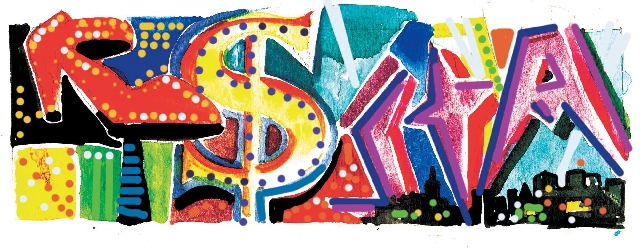Old neon signs glowing reminders of Las Vegas’ past

Stroll into Las Vegas history on a tour of the recently opened Neon Museum on Las Vegas Boulevard just north of Bonanza Road.
The bright lights and glitter that make Las Vegas visible from outer space include thousands of neon signs.
Las Vegas’ first neon sign, designating the Oasis Cafe on Fremont Street, appeared in 1929. The town embraced the technology and turned it into an art form.
The Neon Museum was created to preserve these unique pieces of Las Vegas history, giving a home to retired signs that previously would have been cast aside and left to deteriorate into little more than junk.
The City of Las Vegas and the Southern Nevada Allied Arts Council teamed up in 1996 to form a nonprofit organization to save old signs. Early efforts restored a number of iconic signs for display as art downtown, a public gallery along Fremont Street and nearby side streets. Others stand in the median of Las Vegas Boulevard from just north of Washington Avenue to Sahara Avenue.
The Neon Museum, at 770 Las Vegas Blvd. North, opened for public visitation in October, attracting national attention. It is open everyday except Sundays and draws a steady stream of visitors.
The seashell-shaped lobby of the La Concha Motel, which formerly sat on the Strip next to the Rivera, houses the museum’s visitor center. The eye-catching midcentury structure was taken apart and reassembled in its new downtown location.
Look for the famous high-heeled shoe sign from the Last Frontier’s Silver Slipper Gambling Hall in the median in front of the Neon Museum. Turn into the driveway between the La Concha building and a new park to reach the museum’s parking area.
Museum tours assemble in the repurposed motel lobby. Docents take groups of up to 20 visitors on the hourlong tour of the adjacent Neon Boneyard. Tours run every half hour from 10 a.m. to 3:30 p.m. Make reservations online at neonmuseum.org or call 702-387-6366. Out-of-state visitors pay $18 and residents $12. Tickets are $12 for seniors, students, veterans and active members of the military. Admission is free for children 6 and younger.
The docents point out the most recognizable of the 150 signs and sculptures at the Boneyard. The tour will be a nostalgia trip for folks with any history in Las Vegas, even casual visitors from years ago.
Many of the retired signs were simply replaced by newer versions. Others serve as some of the last remnants of businesses no longer in existence such as imploded Strip properties. The display includes a few fiberglass creations, such as the large skull from the pirate show at Treasure Island.
The Boneyard represents only a portion of the signs stored on the six-acre site. More are visible from beyond a walled area in the back. About 40 percent of the signs came from storage at Young Electric Sign Co., the biggest name in early Las Vegas neon. Many others were donated by businesses or rescued before demolition. Most date from 1930 to 1980.
Saving the signs will be an ongoing project for years. Not all are suitable for restoration. To be used in the street gallery projects, the signs must not be too large. Preference will be given to signs with historical significance. Some signs have more visual appeal. Others may show off animated graphics. After they are restored and installed, they must be maintained as long as they are in use. Therefore, fundraising also will be an ongoing concern.
Margo Bartlett Pesek’s column appears on Sundays.